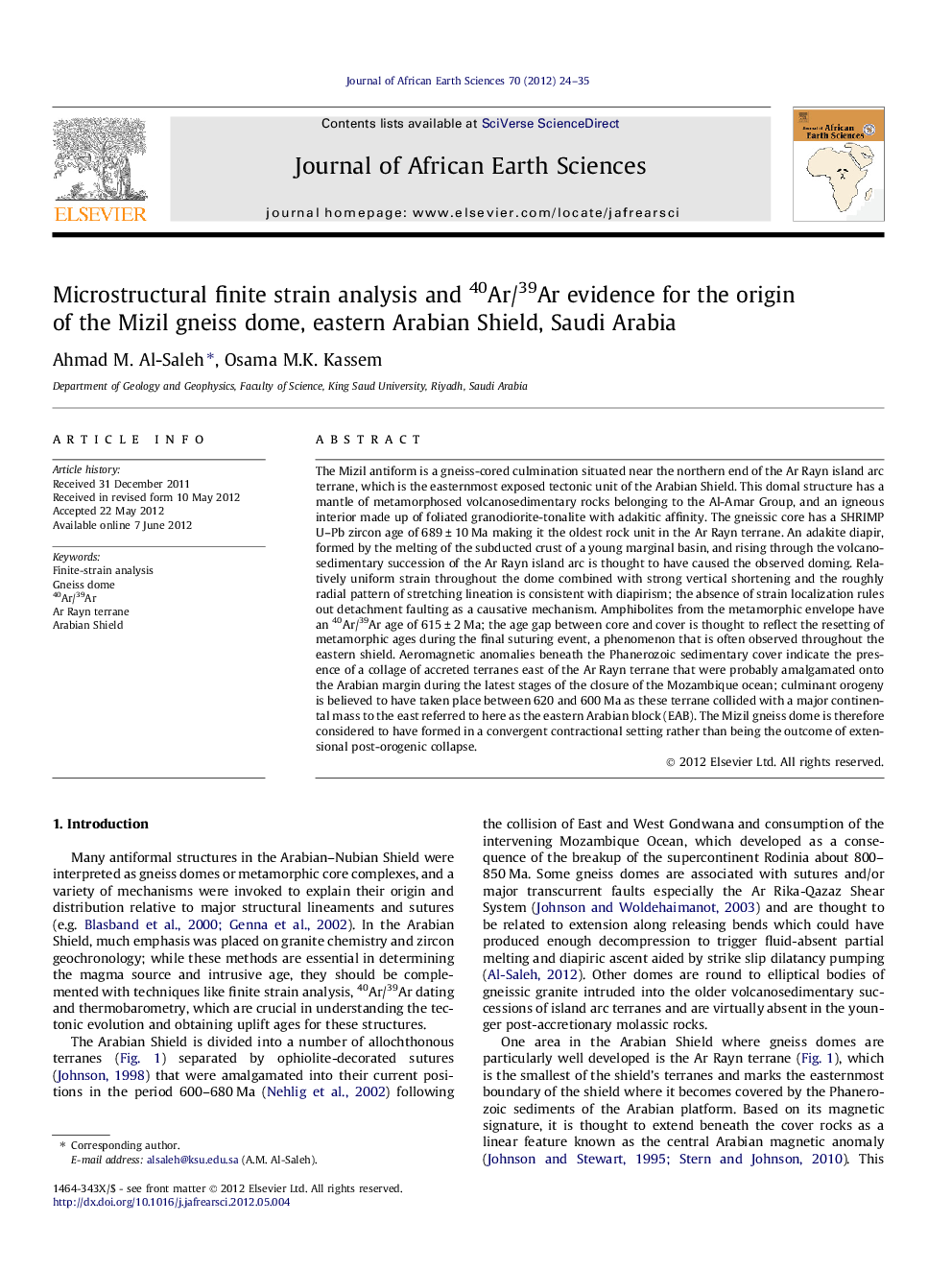| Article ID | Journal | Published Year | Pages | File Type |
|---|---|---|---|---|
| 6443942 | Journal of African Earth Sciences | 2012 | 12 Pages |
Abstract
The Mizil antiform is a gneiss-cored culmination situated near the northern end of the Ar Rayn island arc terrane, which is the easternmost exposed tectonic unit of the Arabian Shield. This domal structure has a mantle of metamorphosed volcanosedimentary rocks belonging to the Al-Amar Group, and an igneous interior made up of foliated granodiorite-tonalite with adakitic affinity. The gneissic core has a SHRIMP U-Pb zircon age of 689 ± 10 Ma making it the oldest rock unit in the Ar Rayn terrane. An adakite diapir, formed by the melting of the subducted crust of a young marginal basin, and rising through the volcanosedimentary succession of the Ar Rayn island arc is thought to have caused the observed doming. Relatively uniform strain throughout the dome combined with strong vertical shortening and the roughly radial pattern of stretching lineation is consistent with diapirism; the absence of strain localization rules out detachment faulting as a causative mechanism. Amphibolites from the metamorphic envelope have an 40Ar/39Ar age of 615 ± 2 Ma; the age gap between core and cover is thought to reflect the resetting of metamorphic ages during the final suturing event, a phenomenon that is often observed throughout the eastern shield. Aeromagnetic anomalies beneath the Phanerozoic sedimentary cover indicate the presence of a collage of accreted terranes east of the Ar Rayn terrane that were probably amalgamated onto the Arabian margin during the latest stages of the closure of the Mozambique ocean; culminant orogeny is believed to have taken place between 620 and 600 Ma as these terrane collided with a major continental mass to the east referred to here as the eastern Arabian block (EAB). The Mizil gneiss dome is therefore considered to have formed in a convergent contractional setting rather than being the outcome of extensional post-orogenic collapse.
Keywords
Related Topics
Physical Sciences and Engineering
Earth and Planetary Sciences
Geology
Authors
Ahmad M. Al-Saleh, Osama M.K. Kassem,
